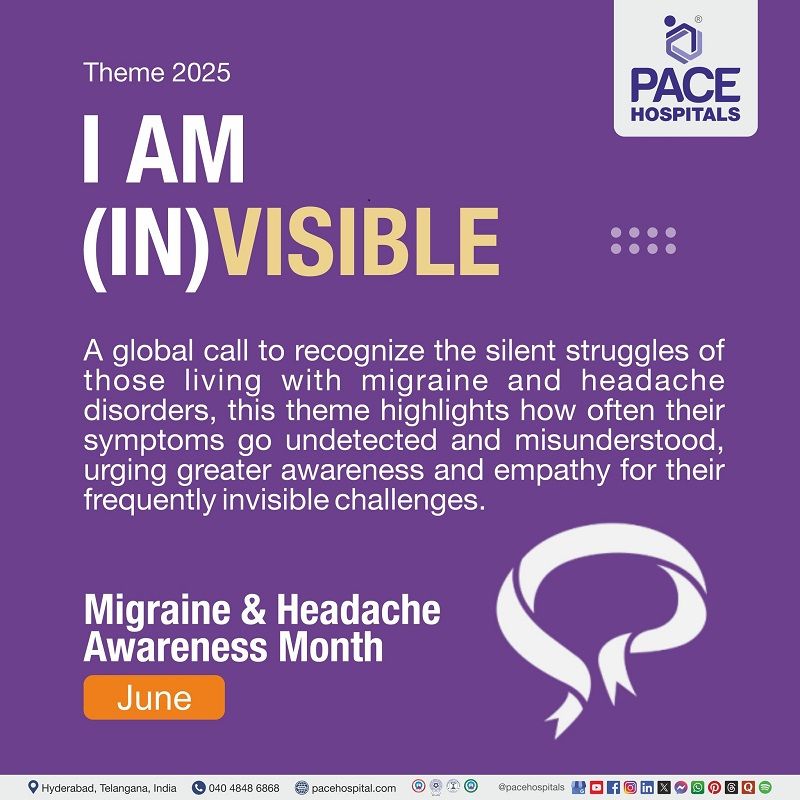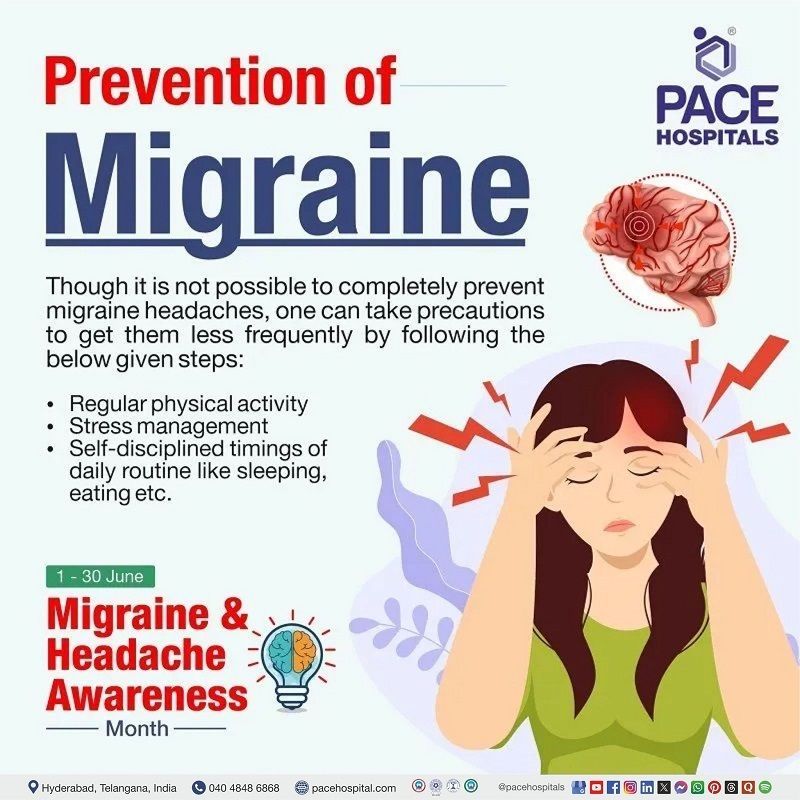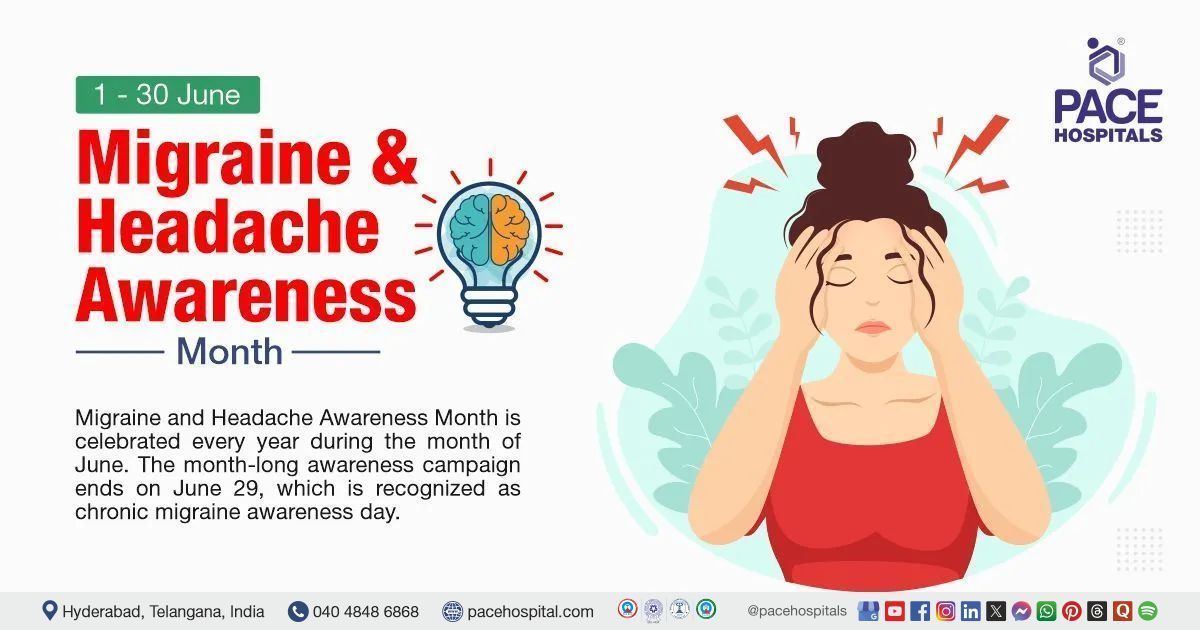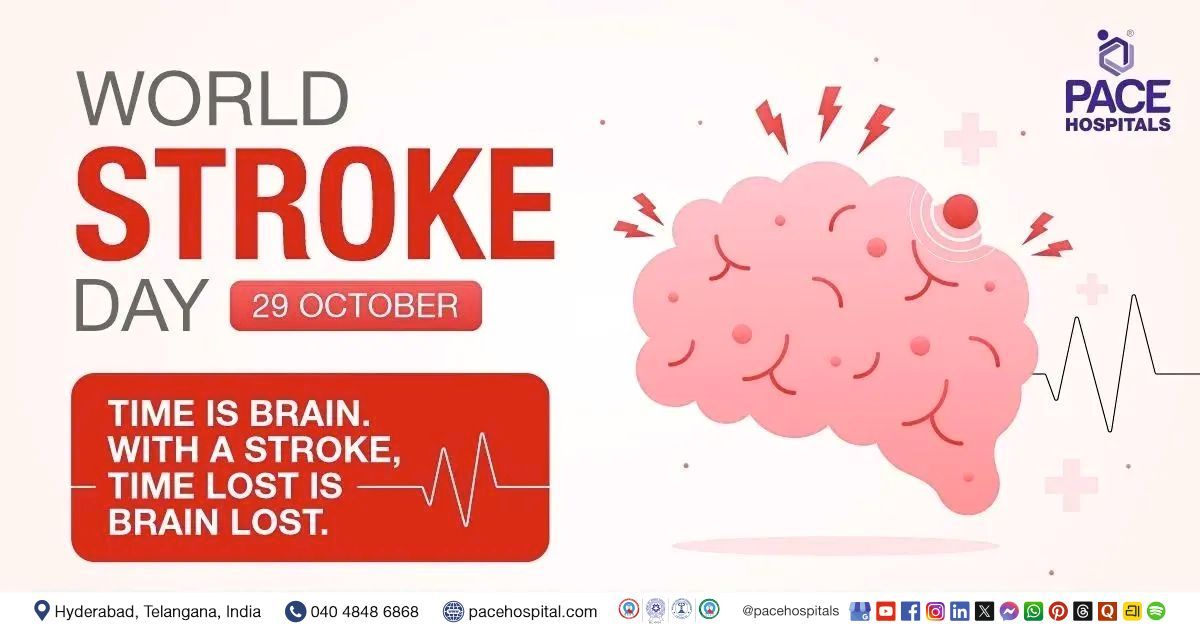Migraine and Headache Awareness Month, 1 - 30 June | Significance & History
Migraine and Headache Awareness Month is the time to foster advocacy and take part in raising awareness of migraine and headache disorders. The Migraine Awareness Month is celebrated every year in the month of June. The month-long awareness campaign ends on June 29, which is recognized as chronic migraine awareness day.
What is Migraine?
Recurrent episodes of moderate to severe headache is the hallmark of the neurological condition known as migraine; other symptoms that present most frequently include nausea, vomiting, Photosensitivity, sensitivity to sound, and scents. These migraine attacks can last for a few hours to several days, hugely impacting the daily routine and functionality of the affected person.
Beyond just causing discomfort, migraines can have a significant negative impact on a patient's overall health. It can disrupt work, education, and social activities, resulting in lower productivity and quality of life. In addition, those who experience migraines may experience emotional anguish, anxiety or grief due to the unpredictable nature of their attacks.

Migraine and Headache Awareness Month 2025 theme
This year, 2025, Migraine and Headache Awareness Month theme is “I AM (IN)VISIBLE.” This theme emphasizes the silent struggles faced by people with migraine and headache disorders, highlighting the frequently undetectable and misinterpreted nature of migraine symptoms.
Year-by-year themes for Migraine and Headache Awareness Month
- Migraine and Headache Awareness Month Theme 2024: Myth, Truth, Action
- Migraine and Headache Awareness Month Theme 2023: Educate Yourself, Educate Others
- Migraine and Headache Awareness Month Theme 2022: Advocate for Treatment Access
- Migraine and Headache Awareness Month Theme 2021: A New Era in Care
- Migraine and Headache Awareness Month Theme 2020: You Need Community
History & Background
A group of campaigners in the United States started an awareness campaign for migraines in 1989, which popularly known as Migraine Awareness Month. Since its first edition in March 1990, the event has become an annual celebration.
Over time, the awareness campaign broadened its scope. It spread to Canada in 1993 and to the United Kingdom in 2012. In an attempt to increase awareness and support for people who suffer from migraines, Migraine Awareness Month is now a global event recognised in more than 100 countries.
Understanding the Difference between Migraine and Headache
While the terms are frequently used synonymously, headaches and migraines are two discrete conditions with diverse causes, symptoms, and therapeutic modalities. Few characteristics of headache and migraine are as mentioned here:
| Aspect | Headache | Migraine |
|---|---|---|
| Meaning | Headache is one of the most common condition that most people will experience at any point of their life. Pain in the head or face is the characteristic symptom of headache | Migraine is a disorder of brain and neurological system with symptoms of excruciating headaches. Several episodes of headache occurs repeatedly, lasting from anywhere between 4 to 72 hours. |
| Risk factors | Sleep disorders, alcohol, stress, age, strong odours etc. | Sleep changes, stress, physical strain, medications etc. |
| Clinical presentation | Alterations in speech, numbness, hallucinations, altered eyesight, and weakness in the muscles. | Vertigo, difficulty in swallowing, nasal congestion, Headache without relief for atleast 4 to 72 hours |
| Types | Primary headache, secondary headache, tension headache and cluster headache. | Aura associated migraine, migraine without aura, chronic migraine type |
Hormonal fluctuations, specific diets, stress, sensory stimuli, altered sleep patterns, and environmental conditions are just a few of the variables that can cause migraines. Prodrome, aura, headache and postdrome are the four stages that migraine attacks normally go through. Every stage may exhibit distinct signs and sensations.
Migraine Awareness Month
It is important to understand that less than 50% of migraine patients consult a doctor, and at least 50% of individuals with migraine go undetected and receive inadequate treatment. Moreover, during their medical training, doctors are only minimally educated about headache disorders as per few statistics.
Raising Awareness: Migraine is not “Just a Headache”
If you experience severe or recurrent attacks, you should consult a doctor, especially if these migraine episodes adversely affect your quality of life or daily tasks. It is important to understand the root cause of migraine as the causes can be unique in each person. Migraine can be effectively managed by recognizing and avoiding triggers, making lifestyle changes, as well as using appropriate drugs as recommended by a doctor. Keeping a headache tracker might be useful for tracking and finding patterns if you feel certain triggers are contributing to your migraine symptoms.

Prevention of Migraine
Though it is not possible to completely prevent migraine headaches, one can take precautions to get them less frequently by following the below given steps:
- Regular physical activity
- Stress management
- Self-disciplined timings of daily routine like sleeping, eating etc.
Share on
Request an appointment
Fill in the appointment form or call us instantly to book a confirmed appointment with our super specialist at 04048486868











